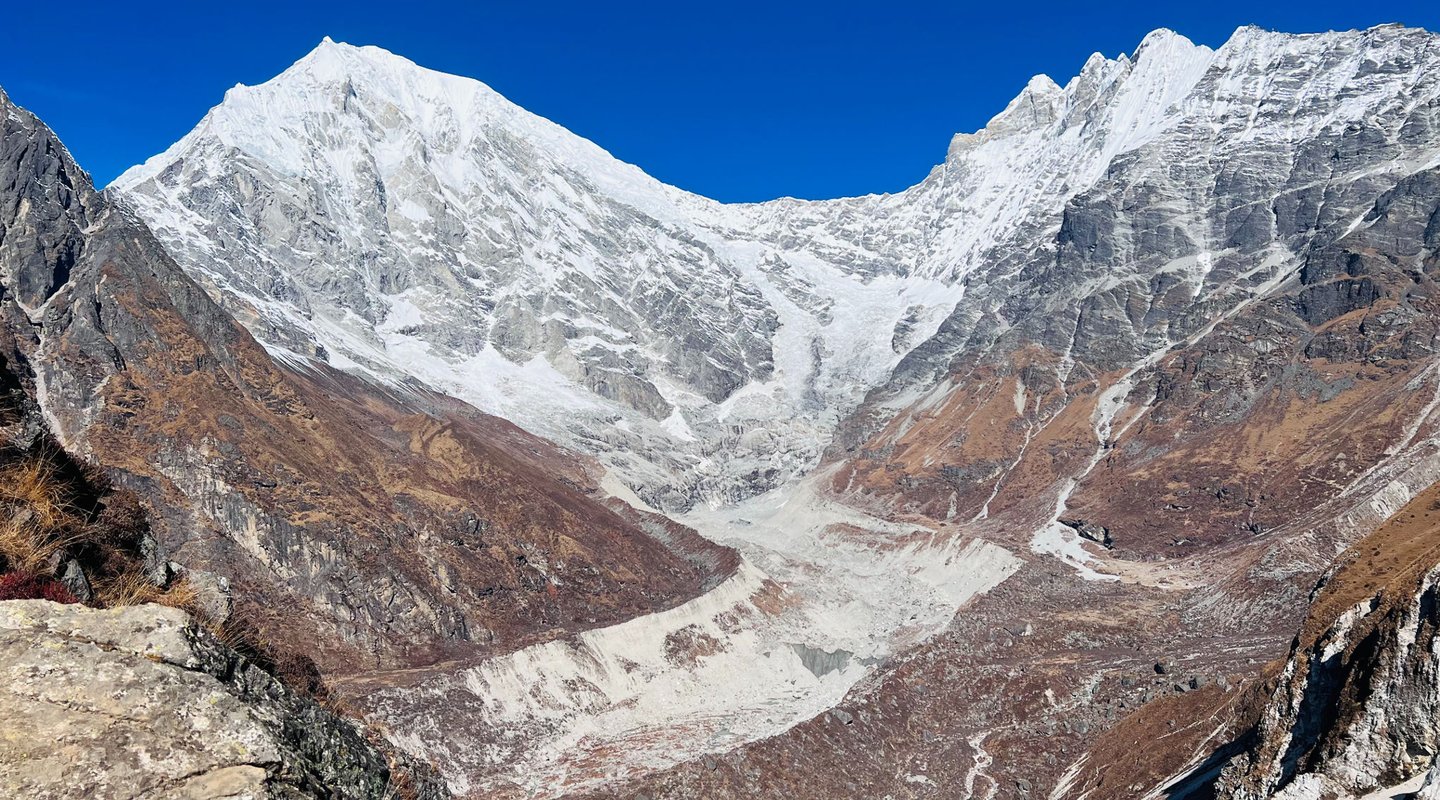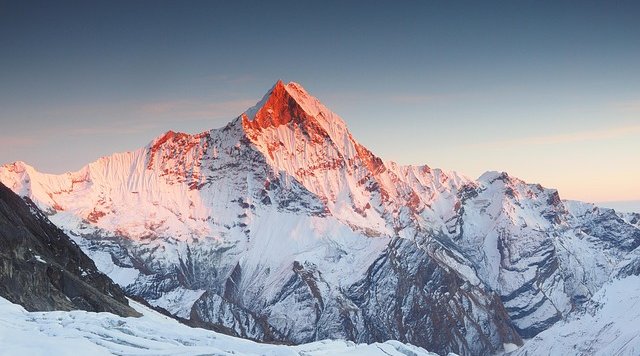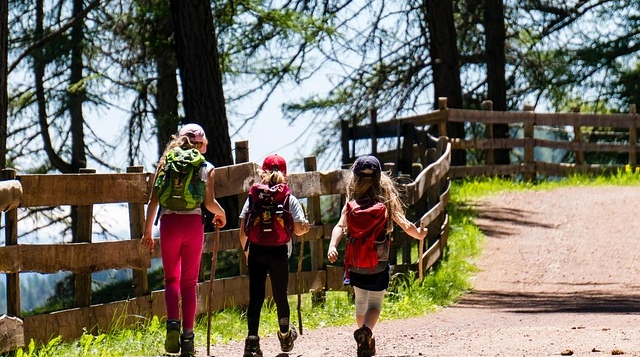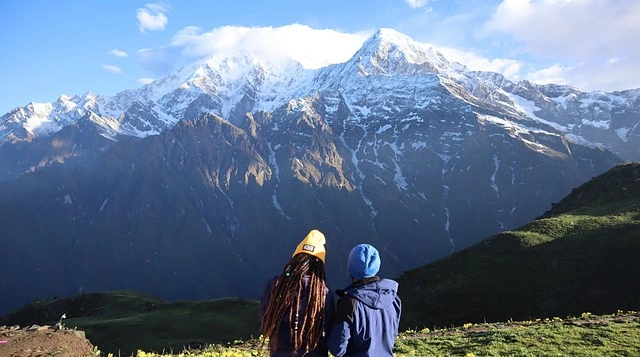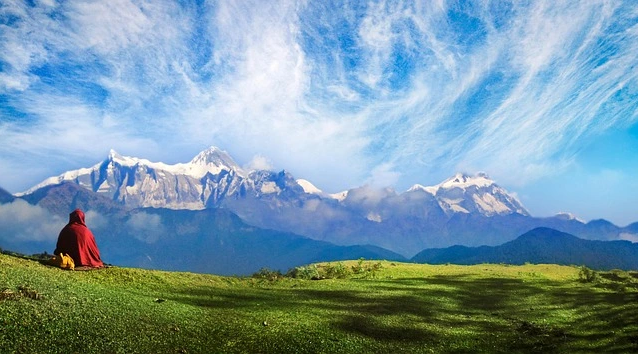A Journey into Natural Splendor and Cultural Riches
Nestled within the heart of Nepal's formidable Himalayan range lies a hidden gem that beckons trekkers and nature enthusiasts alike – the Langtang Valley Trek. This blog will take you on a virtual journey through this remarkable adventure, revealing the secrets of this pristine region and why it should be on every traveler's bucket list.
Complete Itinerary: Langtang Valley Trek
Day 1: Arrival in Kathmandu
Your journey begins in the vibrant capital city of Kathmandu. Upon arrival at Tribhuvan International Airport, you'll be greeted by our team and transferred to your hotel. Use this day to relax and prepare for the upcoming adventure. Overnight in Kathmandu.
Day 2: Kathmandu to Syabrubesi (1,550m)
After an early breakfast, embark on a picturesque drive to Syabrubesi, the starting point of the Langtang Valley Trek. The journey takes around 7-8 hours, offering glimpses of rural life and scenic beauty. Upon reaching Syabrubesi, settle into your lodge and prepare for the trek. Overnight in Syabrubesi.
Day 3: Syabrubesi to Lama Hotel (2,380m)
Your first day of trekking begins with a gradual ascent through lush forests and along the Bhote Koshi River. The trail meanders through picturesque Tamang villages, providing insights into local culture. Arrive at Lama Hotel, a cozy resting place amidst the wilderness. Overnight in Lama Hotel.
Day 4: Lama Hotel to Langtang Village (3,430m)
Continue your journey, ascending through dense rhododendron and oak forests. As you trek further, the valley opens up, revealing stunning mountain views. Reach Langtang Village, a Tamang settlement, and immerse yourself in the local culture. Explore the village and visit monasteries. Overnight in Langtang Village.
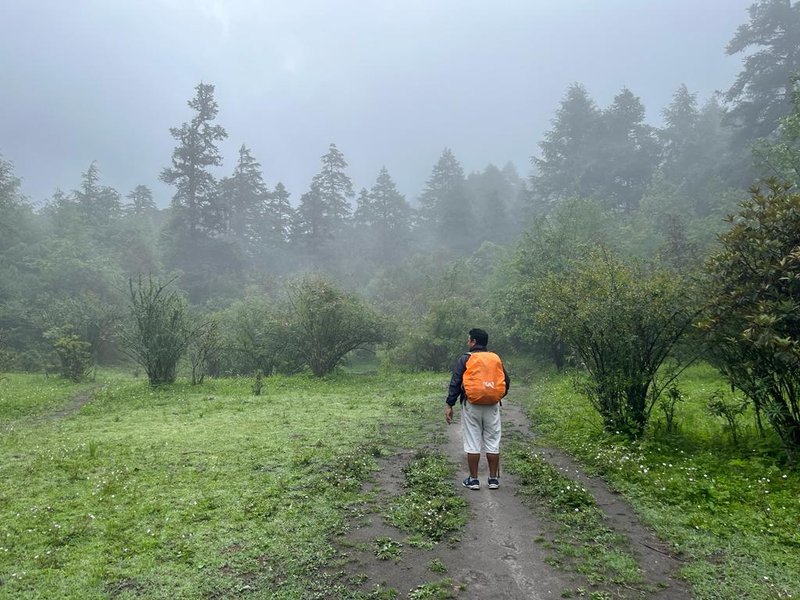
Day 5: Langtang Village to Kyanjin Gompa (3,870m)
Today's trek takes you to Kyanjin Gompa, a sacred Tibetan Buddhist monastery. The trail gradually climbs, offering breathtaking mountain vistas. Upon arrival at Kyanjin Gompa, take in the panoramic views of the Langtang range, including Langtang Lirung. Explore the area and visit the cheese factory. Overnight in Kyanjin Gompa.
Day 6: Acclimatization and Exploration
Acclimatization is crucial for your well-being at higher altitudes. Spend the day exploring the surroundings or taking a short hike to Langtang Lirung base camp or Tserko Ri (4,984m) for even more spectacular views. Use this day to acclimate to the altitude. Overnight in Kyanjin Gompa.

Day 7: Kyanjin Gompa to Lama Hotel
Bid farewell to the stunning mountain scenery of Kyanjin Gompa as you begin your descent back towards Lama Hotel. Retrace your steps through Langtang Village, and enjoy the changing landscapes along the way. Overnight in Lama Hotel.
Day 8: Lama Hotel to Syabrubesi
Continue your descent to Syabrubesi, marking the end of your trek. The journey allows you to reflect on the incredible experiences and sights you've encountered during the Langtang Valley Trek. Celebrate your achievements with fellow trekkers. Overnight in Syabrubesi.
Day 9: Syabrubesi to Kathmandu
Bid farewell to the Langtang Valley as you drive back to Kathmandu. Take this time to relax and unwind. Upon reaching Kathmandu, you'll be transferred to your hotel. Use the evening to explore the bustling streets and vibrant culture of the city. Overnight in Kathmandu.
Day 10: Departure
Your Langtang Valley Trek adventure comes to an end. Enjoy a hearty breakfast at your hotel before departing for Tribhuvan International Airport, where you'll catch your flight home or to your next destination.
The Langtang Valley Trek unfolds a treasure trove of natural wonders:
- Majestic Mountain Vistas: The trek offers panoramic views of snow-capped peaks like Langtang Lirung and Ganesh Himal, creating postcard-perfect moments.
2. Biodiversity Wonderland: Langtang National Park is a haven for wildlife enthusiasts, home to red pandas, Himalayan tahr, and a plethora of bird species amidst rhododendron forests.
3. Rhododendron Blooms: If your trek coincides with spring, the rhododendron forests burst into a riot of colors, painting the landscape with vibrant reds, pinks, and whites.
Langtang Valley Trek cost:
The cost of your Langtang trekking adventure can vary widely depending on your preferences and choices. Here are some factors that will influence the overall cost:
- Accommodation: Langtang offers a range of accommodation options, from basic teahouses to more upscale lodges. Teahouses are more budget-friendly, while lodges provide more comfort and amenities. Expect to pay more for higher-end lodges.
- Duration of Trek: The longer you trek, the higher your overall cost will be. This includes accommodation, food, and guide/porter fees.
- Group Size: If you're trekking with a larger group, you can potentially split some costs, such as guide and porter fees, making it more cost-effective per person.
- Transportation: The cost of getting to and from Kathmandu to the Langtang region will depend on your choice of transportation. Buses are usually more budget-friendly, while private vehicles or flights will be more expensive.
- Permits: You'll need to obtain the necessary permits for the Langtang trek, which include TIMS (Trekkers' Information Management System) and Langtang National Park permits. The cost of permits varies depending on your nationality and the season.
- Food and Drinks: Your daily expenses will include meals and drinks. The cost will vary depending on whether you eat at teahouses or lodges and how extravagant your food choices are.
- Guide and Porter: If you choose to hire a guide and porter, this will add to your expenses. Guides are valuable for navigation and cultural insights, while porters can help carry your luggage.
- Trekking Gear: If you don't have your own trekking gear, you may need to rent or purchase items like trekking boots, jackets, sleeping bags, and other equipment.
- Miscellaneous Expenses: This can include things like tips for guides and porters, emergency expenses, and personal purchases along the way.
To give you a rough idea, a budget-conscious trekker could potentially do the Langtang trek for around $40 to $70 per day. However, a more comfortable and inclusive trek with lodges, guides, and porters could cost anywhere from $70 to $100 or more per day.
Exploring Culinary Delights: Food Choices during the Langtang Valley Trek
Fueling Up for the Trek
1. Dal Bhat: A Nutrient-Packed Start
Dal Bhat, a staple of Nepali cuisine, is the ideal way to kickstart your day. This hearty meal consists of steamed rice (bhat) served with a lentil soup (dal), assorted vegetables, and achar (pickles). It provides the essential carbs and proteins needed for your trekking adventure.
2. Porridge: A Warm and Comforting Choice
During the chilly mornings, a bowl of hot porridge can be your best friend. Made from locally sourced grains like millet, barley, or oats, this wholesome breakfast option is a great source of energy.
3. Momos: Nepali Dumplings
While trekking through the Langtang Valley, you'll come across teahouses and local eateries that serve delicious momos. These steamed or fried dumplings are typically stuffed with minced meat or vegetables, offering a quick and tasty midday energy boost.
4. Thukpa: A Tibetan Delicacy
Thukpa is a hearty Tibetan noodle soup that's perfect for recharging your energy levels. It's usually made with meat, vegetables, and flavorful spices. The warm broth is particularly comforting on cooler days.
5. Sherpa Stew: Hearty and Wholesome
A bowl of Sherpa stew is the perfect way to conclude your day of trekking. Packed with meat, vegetables, and aromatic spices, this warm and filling dish will replenish your strength.
6. Thakali Set: A Culinary Extravaganza
The Thakali Set is a traditional Nepali meal that showcases a variety of flavors. It typically includes rice, lentil soup, fried fish, roasted buckwheat, and various pickles. It's a delightful feast to indulge in after a long day on the trail.
7. Pancakes: A Familiar Delight
Some teahouses offer pancakes that can be served with toppings like honey or jam. They provide a familiar and comforting start to your day.
8.Fried Rice: A Quick and Filling Choice
Some teahouses offer fried rice with vegetables, eggs, and optional meat. It's a quick and satisfying lunch option for trekkers on the move.
9. Potato Dishes: Local Comfort Food
Potatoes are a staple in the Nepali diet, and you can find various potato-based dishes like potato curry or fried potatoes at teahouses. They are hearty and filling.
10.Fried Noodles: Asian-Inspired Fare
Fried noodles with vegetables and a choice of meat or tofu are a flavorful dinner choice. They offer a taste of Asian cuisine in the Himalayas
These additional food options provide even more variety to your Langtang Valley trekking experience. Remember to stay hydrated, eat to sustain your energy, and savor the local flavors along the way. Happy trekking!
Internet and Electricity during Langtang Valley Trek: A Comprehensive Guide
Internet and Electicity in Langtang Valley
Internet and electricity availability during the Langtang Valley Trek can be quite limited, especially as you ascend higher into the mountains. Here's what you can generally expect:
- Internet Access:
- In the lower parts of the Langtang Valley, such as Syabrubesi and Lama Hotel, you may find some teahouses or lodges that offer limited and slow Wi-Fi access for a fee. However, the quality of the connection can be unreliable, and it may not be available in all places.
- As you ascend higher into the valley, especially beyond Kyanjin Gompa, it becomes increasingly unlikely to find internet access. At higher altitudes, the focus is on basic necessities, and connectivity is generally not a priority.
- Electricity:
- Most teahouses and lodges in the upper Langtang Valley have electricity, often powered by solar panels or small hydroelectric generators. However, there is not high voltage electricity in between Bamboo to Lama Hotel but there are some solar pannels which is very Limited.
- As you go higher into the valley, electricity availability becomes easier which is opposite of other trekking trail in Nepal.
- Charging your devices (e.g., phones, cameras) is usually possible in teahouses and lodges, but there may be a fee for this service.
It's important to be prepared for limited connectivity and intermittent electricity during your Langtang Valley Trek. Here are some tips:
- Carry Power Banks: To keep your devices charged, bring power banks to extend your battery life between charges.
- Notify Loved Ones: Inform your family and friends that you might not have regular communication, so they are aware of the situation.
- Download Offline Maps: Before your trek, download offline maps and any necessary apps or resources you might need for navigation, as you may not have access to real-time maps.
- Communicate with Your Trekking Group: If you're trekking with a group or guide, establish a plan for communication and meeting points, especially if you get separated on the trail.
- Enjoy the Disconnect: Embrace the opportunity to disconnect from the digital world and fully immerse yourself in the stunning natural surroundings of the Langtang Valley.
Overall, while internet and electricity may be limited, the Langtang Valley Trek offers an incredible experience in terms of natural beauty and cultural immersion. Just be prepared for a more rustic and disconnected trekking experience compared to urban areas.
FAQ
What is the Langtang Valley Trek?
The Langtang Valley Trek is a popular trekking route in Nepal, known for its stunning Himalayan views, rich cultural experiences, and diverse wildlife encounters.
How long is the Langtang Valley Trek?
The trek typically takes around 7 to 12 days, depending on the specific itinerary and your pace.
What is the best time to do the Langtang Valley Trek?
The best time for the trek is during the spring (March to May) and autumn (September to November) when the weather is pleasant, and the skies are clear. These seasons offer the best visibility for mountain views.
Is the Langtang Valley Trek suitable for beginners?
Yes, the Langtang Valley Trek is considered moderate in difficulty, making it accessible to both novice and experienced trekkers. However, some prior hiking experience is beneficial.
What permits are required for the Langtang Valley Trek?
Trekkers need a Langtang National Park Entry Permit and a TIMS (Trekkers' Information Management System) card, which can be obtained in Kathmandu or at the trailhead.
Are there accommodation and food options along the trail?
Yes, there are tea houses and lodges in villages along the trail. They offer basic but comfortable accommodation and serve a variety of local and international dishes.
What should I pack for the Langtang Valley Trek?
Essentials include warm clothing, sturdy trekking boots, a good-quality sleeping bag, a backpack, a water bottle, and personal items like sunscreen and a first-aid kit.
Are there opportunities for cultural interactions during the trek?
Absolutely! You'll have the chance to visit local villages, monasteries, and interact with the Tamang and Sherpa communities, gaining insights into their unique cultures.
Is altitude sickness a concern on this trek?
While the Langtang Valley Trek reaches a moderate altitude, it's essential to acclimatize properly. Trekking at a steady pace and staying hydrated can help prevent altitude sickness.
How do I book a Langtang Valley Trek?
You can book a trek through reputable trekking agencies in Kathmandu or online. It's advisable to research and choose an agency with a good track record and experienced guides.
Book your Trek here: Langtang Valley Trek
How can I mitigate the risk of altitude sickness on the Langtang Valley Trek?
Proper acclimatization is key. Trekking at a steady pace, staying well-hydrated, and listening to your body are effective ways to prevent altitude sickness when ascending to higher altitudes.
What is the starting point of the Langtang Valley Trek?
The trek typically starts from Syabrubesi, which is accessible by a scenic drive from Kathmandu. Syabrubesi serves as the gateway to the Langtang region.
Do I need a guide and porter for the Langtang Valley Trek?
Hiring a guide and porter is optional but highly recommended. Guides provide valuable local insights, and porters can ease the burden of carrying heavy backpacks, allowing you to enjoy the trek more comfortably.
Is it possible to customize the Langtang Valley Trek itinerary?
Yes, many trekking agencies offer customizable itineraries to suit your preferences and time constraints. Whether you want a shorter trek or additional days for exploration, options are available. Let us know we can customize the within your boundries.
Are there any specific cultural customs or etiquette I should be aware of during the trek?
Respecting local customs, removing shoes when entering homes or monasteries, and asking for permission before taking photographs are some of the cultural etiquettes to keep in mind.
What is the best way to get to Kathmandu, Nepal, to start the Langtang Valley Trek?
Most international travelers arrive in Kathmandu by air. Tribhuvan International Airport (TIA) in Kathmandu is well-connected to major cities around the world.

